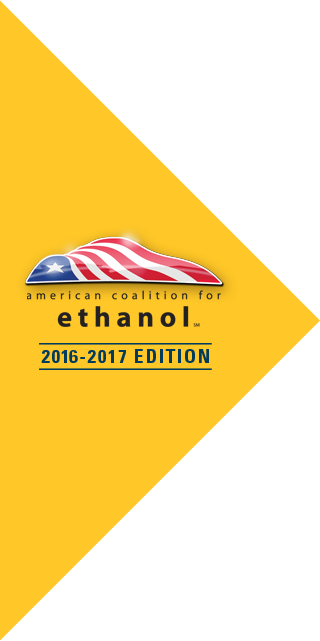FTC Labeling Requirements
E15 hose configuration/labeling
After E15 was approved for use in all cars and light duty trucks model year 2001 and newer, rules were developed to prevent E15 misfueling, which was primarily addressed through labeling regulations (see pages 80-81). Later in the process, a concern was expressed over residual fuel in the hose, the theory being that if someone bought E10 after another customer bought E15, the leftover E15 in the hose would bump the E10 up to a level not allowed in cars and small engines.
As a practical matter, if someone bought one gallon of E10, right after another driver purchased E15, that gallon of fuel could actually be E11. And while it might seem that scenario is extremely unlikely, EPA has approved 3 hose configurations to address
that possibility:
- E15 can be sold from a dedicated hose
- E15 can be sold on the same hose with gasoline (E0 to E10) using this configuration:
Require a minimum purchase of four gallons and apply a label stating “Minimum Fueling Volume 4 Gallons.
Dispensing Less May Violate Federal Law.” - E15 can also be sold on the same hose with gasoline (E0 to E10) using this configuration: Provide one fueling position selling E10 or less, and provide signage indicating its availability. Fueling positions offering E15 must be labeled “Passenger Vehicles Only. Use in other vehicle engines and equipment may violate federal law.”
For these and additional label examples, visit the Blend Your Own (BYO) Ethanol campaign website at: www.byoethanol.com/dispenser-labels-available.html
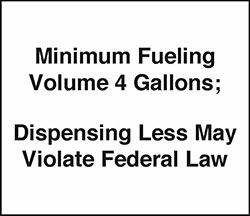
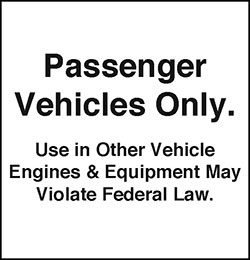
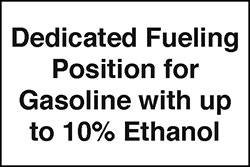
DISPENSER LABELS
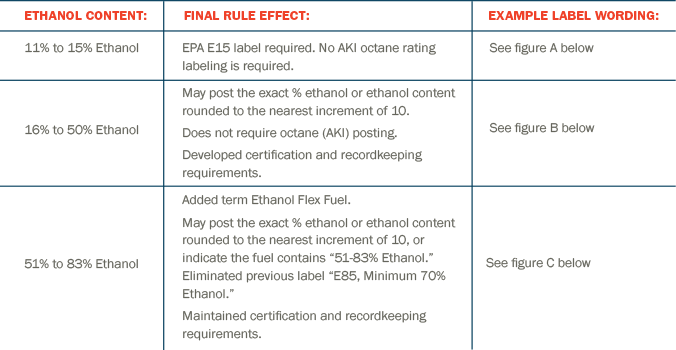
Figure A
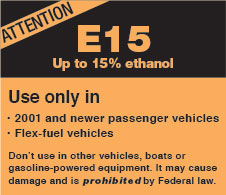
Figure C
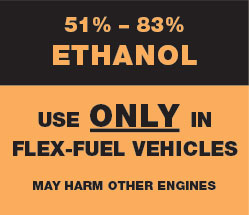
Figure B
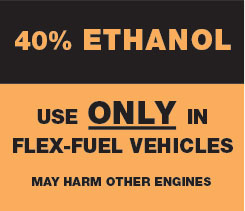
*Table content and label drafts courtesy of KMoore Consulting, LLC
